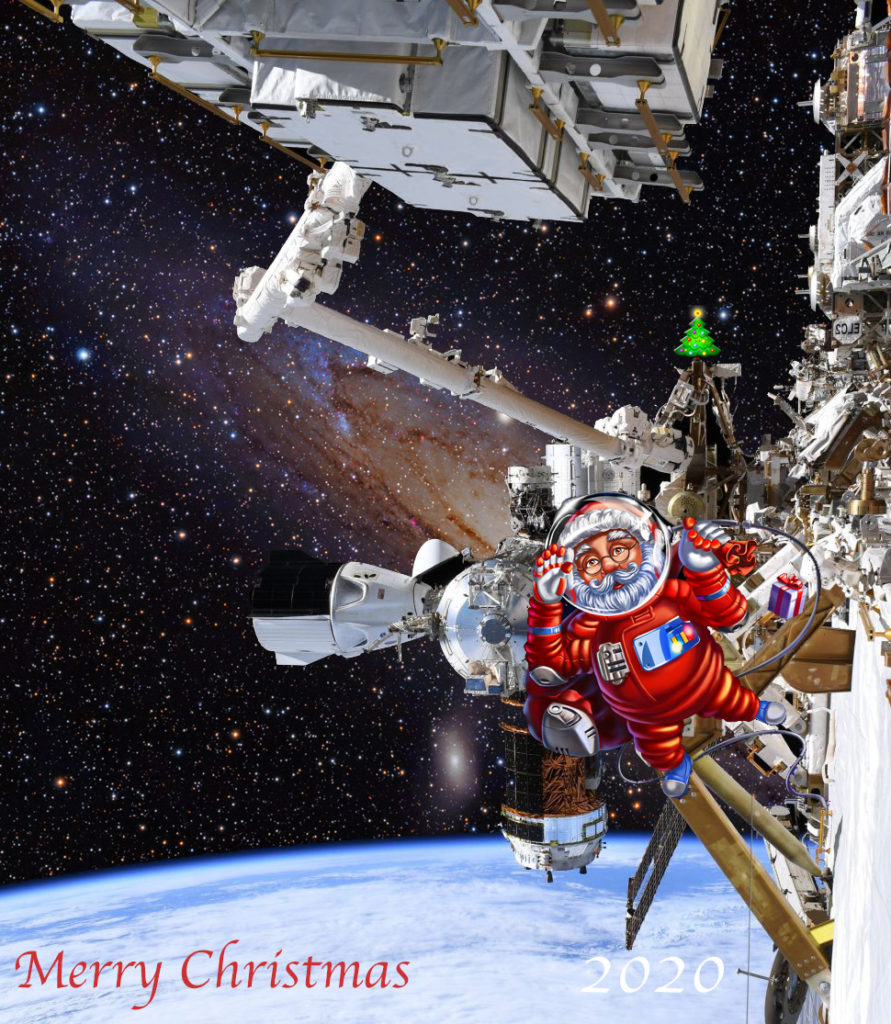My holiday card this year in the cosmic greetings, Santa-in-Space series. In the bubble … at various scales …

Notes
• Space.com > “NORAD tracks Santa Claus in cosmic trip to the International Space Station” by Tariq Malik (December 24, 2020)
• YouTube > NORAD > Analytical Graphics > “NTS 2020 ISS” (Dec 21, 2020) – The North American Aerospace Defense Command (NORAD) and Analytical Graphics, Inc. (AGI) have unveiled a new video of Santa’s flyby of the International Space Station, which comes just in time for Christmas during the station’s 20th anniversary year of crewed missions.
• Space.com > “Santa Claus snags FAA license for commercial mission to space station” by Mike Wall (December 23, 2020)
Other midstream bubbles … a vision of galactic ambassadors …
• Phys.org > “An updated way to calculate the likelihood of the existence of extraterrestrial civilizations” by Bob Yirka, Phys.org (December 22, 2020) – A small team of researchers from California Institute of Technology, NASA’s Jet Propulsion Laboratory and Santiago High School has developed an updated version of an old equation to calculate the likely existence of extraterrestrial civilizations. The team has uploaded their paper to the arXiv preprint server.
• Space.com > “Alien hunters detect mystery signal coming from the closest star system” by Rafi Letzter (December 21, 2020) – Astronomers hunting for radio signals from alien civilizations have detected an “intriguing signal” from the direction of Proxima Centauri, the nearest star system to the sun, …
• National Geographic > “How many alien civilizations are out there? A new galactic survey holds a clue” by Nadia Drake (November 2, 2020)

So, wondering how many alien civilizations are out there? Say, just in the Milky Way? Here’s an article (below) with a somber estimation.
• Space.com > “The Milky Way is probably full of dead civilizations” by Rafi Letzter (Jan 2, 2021) – An astrobiological statistical estimation using an empirical galactic simulation model.
Notes
[1] From arxiv.org paper:
• arxiv.org > “A Statistical Estimation of the Occurrence of Extraterrestrial Intelligence in the Milky Way Galaxy” (v2 17 Dec 2020)
Authors:
• Xiang Cai1, Santiago High School, Corona, CA
• Jonathan H. Jiang (astrophysicist) & Kristen A. Fahy, Jet Propulsion Laboratory, California Institute of Technology, Pasadena, CA
• Yuk L. Yung, Division of Geological and Planetary Sciences, California Institute of Technology, Pasadena, CA